I want to make a simple IOT project for my home and I'm searching for a mcu to start with I was raffling through the web site of a few popular distributors and I found that some CortexM4 are much more expensive than CortexM7 which are more powerful though Also I saw that some CortexA5 are cheaper than some CortexM7ARM CortexM4 è il core con Architettura ARM, nato come evoluzione del core ARM CortexM3 Il core M4 offre prestazioni avanzate di controllo digitale e quindi ideale per applicazioni DSP con tutta la semplicità operativa tipica del core ARM CortexM Basso assorbimento, bassi costi ed alta efficienza lo porteranno ad essere un core usato nel111 ARM Cortex M4 Sleep Modes Cortex M4 Power management methodology supports 2 sleep modes 1 Sleep 2 Deep Sleep From M4F processor logic point of view, there is little difference between the above two sleep modes However, it's the way these sleep modes may be utilized and/or implemented, which may make a difference For example, the
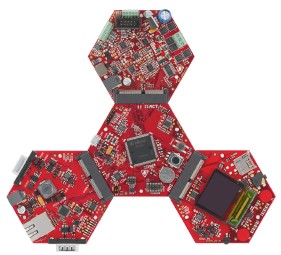
Freertos Port And Pre Configured Application For The Infineon Xmc4000 Xmc4500 Arm Cortex M4f Microcontroller Using Keil And Iar Tools
Cortex m4f vs m4
Cortex m4f vs m4-All XMC4000 devices are powered by Arm® Cortex®M4 with a builtin DSP instruction set The Single Precision Floating Point Unit, Direct Memory Access (DMA) feature and Memory Protection Unit (MPU) are stateoftheart for all devices – even the smallest XMC4000 runs with up to 80MHz in core and peripheralsUsing CortexM3/M4/M7 Fault Exceptions MDK Tutorial AN9, Summer 17, V 50 feedback@keilcom Abstract ARM® Cortex®M processors implement an efficient exception model that traps illegal memory accesses and several incorrect program conditions This application note describes the CortexM fault exceptions from the
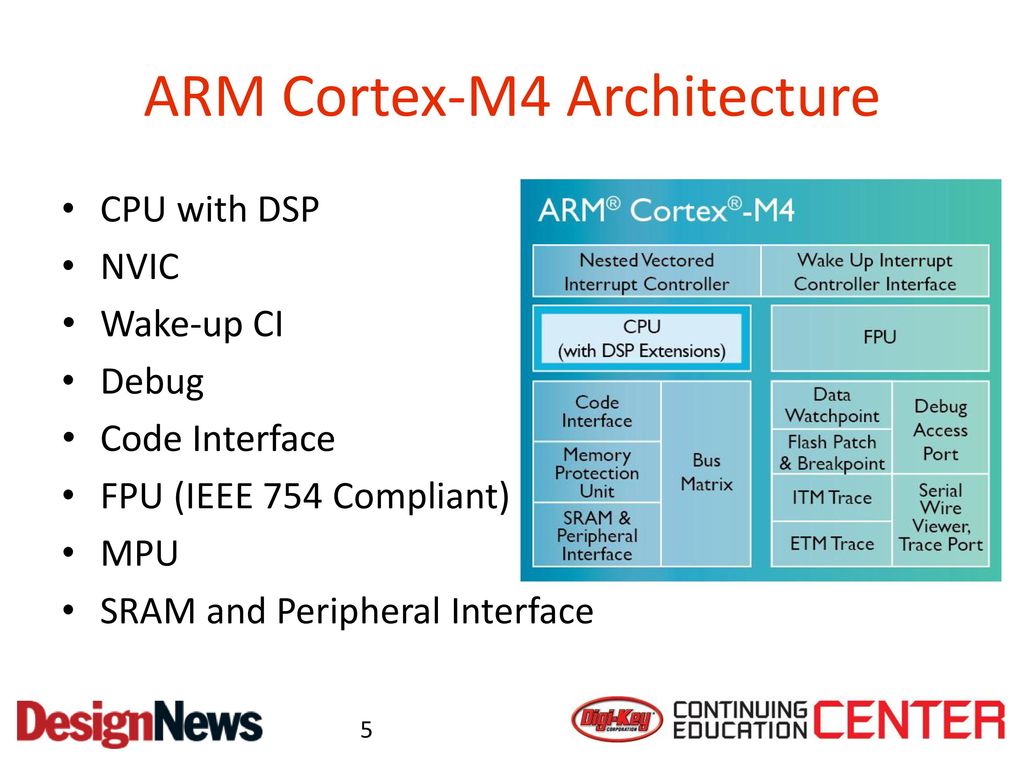



Designing With Arm Cortex M4 And A Real Dev Board Ppt Download
The CortexM4 processor is developed to address digital signal control markets that demand an efficient, easytouse blend of control and signal processing capabilities The combination of highefficiency signal processing functionality with the lowpower, low cost and easeofuse benefits of the CortexM family of processors satisfies many markets · ARM CortexM4は、M3にDSP(SIMD,MAC)命令を追加したものだが、CortexM4Fと呼ばれるものは、さらに単精度のFPU(浮動小数点ユニット)を持っている。どれくらい効果があるものか、三角関数の計算で速さを比較してみた。 方法 CortexM4Fをコアに持つLPC4370を用い、FPUをFirst of all Most of the differences between the CortexM4 and CortexM7 bring only improvements I say most, because the CortexM7 cost a little more The short answer is that many instructions take less time to execute, for instance the Branch Predictor on the CortexM7 allows you to execute branches faster than on the CortexM4
· CORTEX M4 vs CORTEX M3Posted by under003 on May 11, 11Hello, I have been studying the Architectures of Cortex M3 and the Cortex M4, ARM V7M and ARM V7EM and I haven´t found lots of differences I have to do something for the university, and my question is if I can use the FreeRTOS DEMO · Since there is a CortexM4F core, it also inherits a number of peripherals that come from a Cortex INAUDIBLE family, including the micro DMA, SysTick, as well as Interrupt, as mentioned before This slide gives you a quick overview to compare the different flavors of the CortexM cores, starting with CortexM0 all the way to CortexM4Cortex M4 also provides instruction sets of ARM 32 bit type, Thumb 16 bit and Thumb 2 But it also includes range of saturating and SIMD instructions specifically optimized to handle DSP algorithms Cortex M3 does not have a floating point unit Cortex M4 provides an optional floating point unit and in such cases the cores are denoted as M4F
· CortexR and cortexM series is targeted for different requirements and for different applications It is important to know the parameters and features that separates them as there could be applications where both of them can fit in This paper is targeted for such a scenario and helps the Designers for selection The final objective is to help the Designers or Developers to haveSignificant difference is the CortexM4 core's capability for DSP The CortexM3 and CortexM4 share the same architecture and instruction set (Thumb2) However, the CortexM4 adds a range of saturating and SIMD instructions specifically optimized to handle DSP algorithmsTable 74 CortexM4F Floating Point system registers This book is for the CortexM4 processor Product revision status The rnpn identifier indicates the revisi on status of the product described in this manual, where rn Identifies the major revision of the product




Msp432 Mcus And Arm Cortex M4f Core Ti Com Video



Are The Arm Cortex Mx Processors Harvard Or Von Neumann Architecture Quora
3131 Syntax79 3132 Operation79The Arm CortexM0 coprocessor is an energyefficient and easytouse 32bit core which is upward code and toolcompatible with the CortexM4 core The CortexM0 coprocessor, designed as a replacement for existing 8/16bit microcontrollers, offers up to 4 MHz performance with a simple instruction set and reduced code size More · Perhaps worth noting that not all CortexM4 parts have hardware FP (though the LPC4357 does) – Clifford Feb 7 '15 at 1128 You don't actually need mfloatabi=hard to
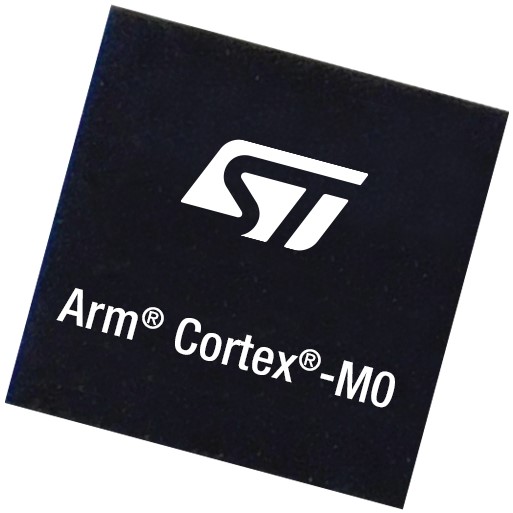



Arm Cortex M4 Microcontrollers Stmicroelectronics




Be Aware Floating Point Operations On Arm Cortex M4f Mcu On Eclipse
· Codec2 for CortexM4F Contribute to piratfm/codec2_m4f development by creating an account on GitHubEdit I'm sure this is opinion based But I'm looking for some valid design inputs which help me make this choiceThe Stellaris LM4F232 USBCAN Evaluation Kitis a compact and versatile evaluation platform forthe Stellaris LM4F232 ARM® Cortex™M4Fbasedmicrocontroller Th




Stm32 Wikipedia
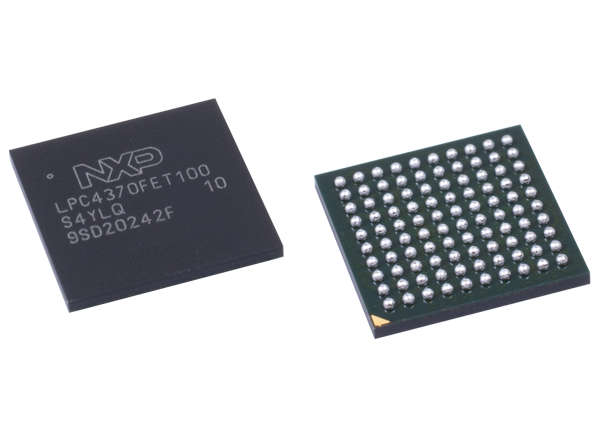



Lpc4370 32 Bit Arm Cortex M4 2 X M0 Mcu Nxp Semiconductors Mouser
· The answer is that the ARM CortexM4F has only a *single precision* (float) FPU, and not a double precision (double) FPU As such it only can do float operations in hardware but not for double type The solution in this case is to use float (and not double) constants In C the 'f' suffix can be used to mark constants as float · CortexM内核M0,M0,M3,M4,M7之间的区别 图片来自于wwwstmcucomcn highperformance 高性能 Mainstream 主流 Ultralowpower 低功耗知识补贴: 之所以ARM公司会把CortexM分为这么多系列,主要是针对不同的应用领域;下面详细介绍:CortexM分为:M0,M0,M3CortexM4 hardware implementation Although the CortexM4 seems to be a simple 32bit core, it supports sophisticated mechanisms, such as exception preemption, internal bus matrix and debug units Through a tutorial, the CortexM4 low level programming is explained, particularly the ARM
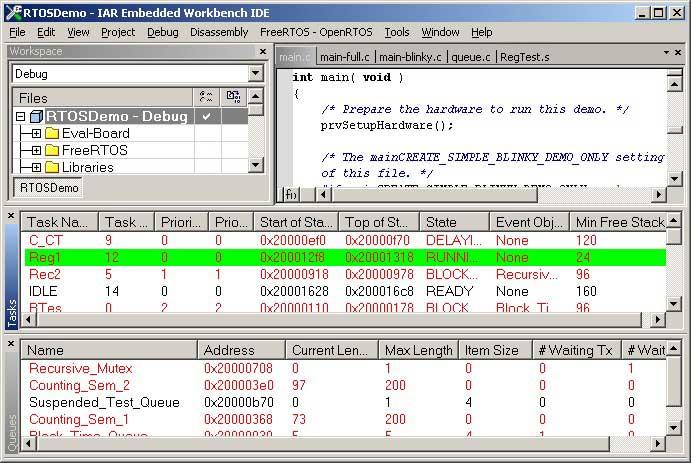



Freertos Projects For Infineon Xmc4000 Arm Cortex M4f Mcus
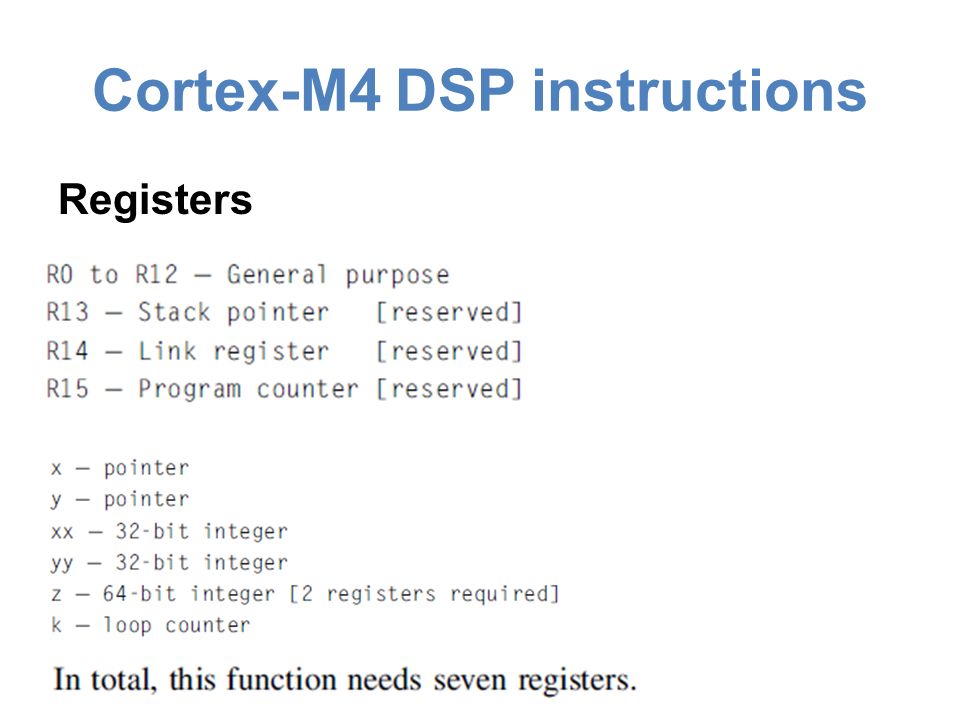



Arm Cortex M3 And Cortex M4 Processors Ppt Download
IMPORTANT NOTICE Texas Instruments Incorporated and its subsidiaries (TI) reserve the right to make corrections, modifications, enhancements, improvements,Active Oldest Votes 2 You're best off looking one level up, at datasheets or published benchmarks for actual devices that are available One notable manufacturer of CortexM4 parts is Freescale The CortexM4 is just a processor core design that is licensed by silicon manufacturers as the basis for their microprocessors · GCC CortexM4 mfpu=vfpv4 vs mfpu=fpv4spd16 2 I'm using a Freescale K22 (CortexM4F) with Kinetis Design Studio, which includes a GNU toolchain I'm trying to use a binaryonly library provided by Invensense, and they compiled it with GCC for use on a the CortexM4F using the compiler's CPU options "mcpu=cortexm4 mthumb mfloatabi



Cortex M4 Technical Reference Manual




Amazon Com Mk26fn2m0vmi18 Arm Mcu Kinetis Arm Cortex M4 Microcontrollers Arm Cortex M4f 32bit 180 Mhz 2 Mb 256 Kb Pack Of 2 Mk26fn2m0vmi18 Home Improvement
Cortex®M4 Microcontrollers FM4 S6E2H Series Motor Control ARM® Cortex®M4 MCU CortexM4F, MPU, NVIC 128ch Freq 160 MHz Power supply voltage range 27 V to 55 V CAN 2ch (Max) N/A 2ch (Max) N/A DMAC 8ch DSTC 256ch Multifunction Serial InterfaceArm CortexM4 Der CortexM4 ist eine Architektur (Armv7M) aus der Arm CortexM Familie für Mikroprozessoren von ARM Diese Architektur kann als Nachfolger für die ARM7 im Bereich der Mikrocontroller betrachtet werden Der ArmCortexM4Prozessor wird von ARM mit der Eigenschaft efficient digital signal control belegtThe ARM CortexM4 processor with floatingpoint unit (FPU) has a 32bit instruction set (Thumb2 technology) that implements a superset of 16 and 32bit instructions to




Arm Mcu Floating Point Unit Stm32 F3 Arm Cortex M4 Microcontrollers Arm Cortex M4f 32bit
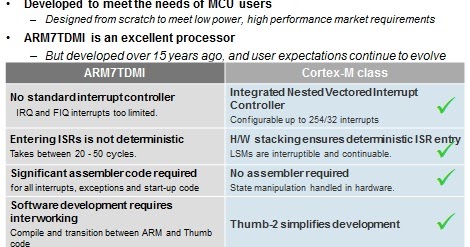



Catching The String Thoughts On Arm Cortex M Differences
The iMX 8M family of applications processors based on Arm ® Cortex ®A53 and CortexM4 cores provide industryleading audio, voice and video processing for applications that scale from consumer home audio to industrial building automation and mobile computers Video quality with full 4K UltraHD resolution and HDR (HDR10 and HLG) Highest levels of pro audio fidelity withST's STM32F4 series features ARM Cortex M4based highperformance 32bit microcontrollers, with DSP and FPU instructions, reaching 225 DMIPSThe MAX microcontroller (MCU) is an advanced systemonchip (SoC) featuring an Arm® Cortex®M4F CPU for efficient computation of complex functions and algorithms that is qualified to operate at a temperature range of 40°C to 105°C The SoC inte




Se Pyramids Cortex M4f With Sdram Dev Board Hackster Io




Is Cortex M4 The Strongest Processors Blog Processors Arm Community
· CortexM0 vs CortexM4 CortexM is a 32bit RISC core from ARM CortexM0 and CortexM4 cores among them are very popular for microcontrollers You see lot of microcontrollers in market with these cores Now a days you see lot of mixed signal designs with digital integration using this core Take the case of ADSP from analog devicesARM®Cortex®M4 32b MCUFPU, up to 256KB Flash32KB SRAM, timers, 4 ADCs(16bit Sig Delta / 12bit SAR), 3 DACs, 2 comp, 18 V Datasheet production data Features • Core ARM® 32bit Cortex®M4 CPU (72 MHz max), singlecycle multiplication and HW division, DSP instruction with FPU (floatingpoint unit) and MPU (memory protection unit) · In CortexM4 case, the FPU performance is about 60 to 80 % higher than software emulation performance Compared with CortexM0, CortexM4 performance is about 6 times higher performance Also, because CortexM0 adopted the 2 stage pipeline, it would not get such faster clock speed as CortexM4
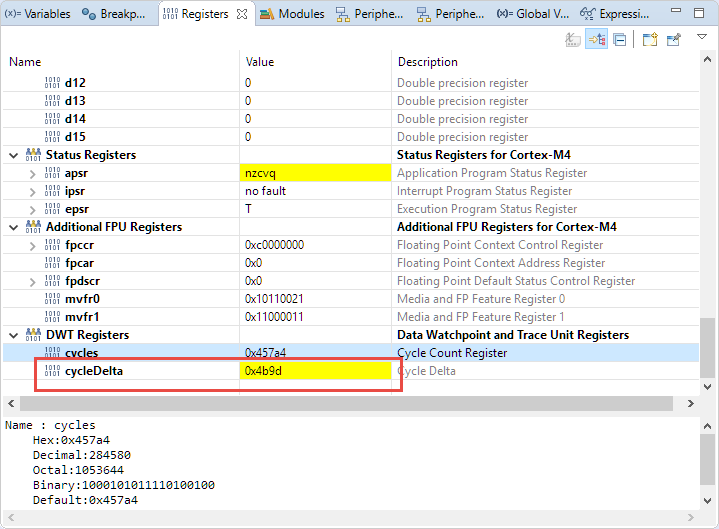



Be Aware Floating Point Operations On Arm Cortex M4f Mcu On Eclipse
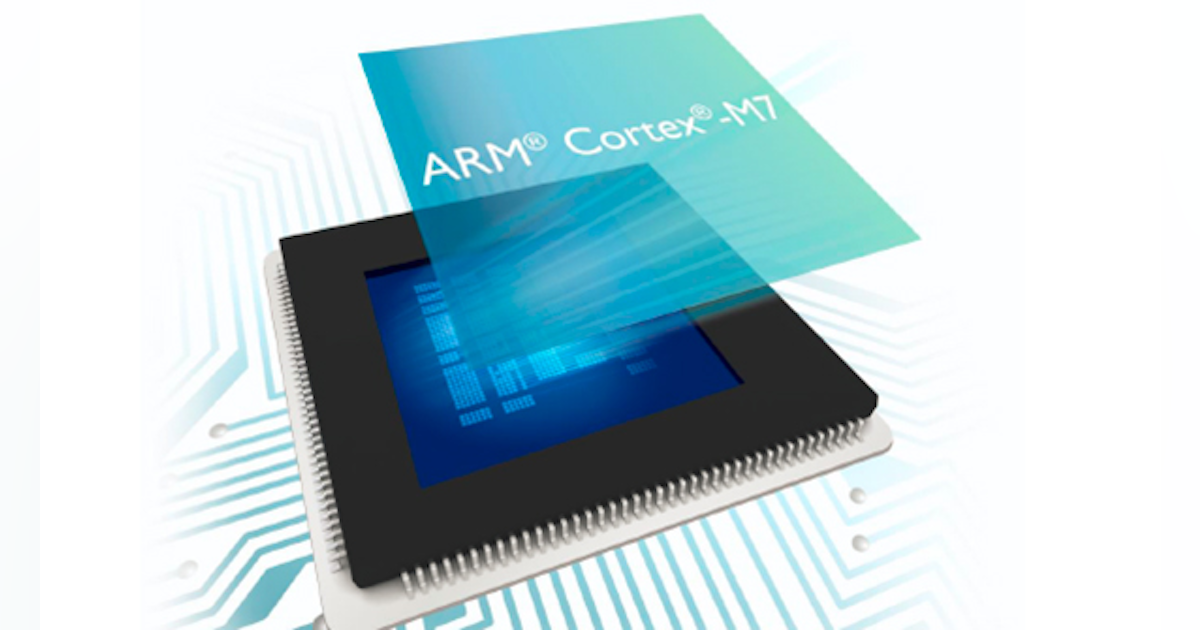



Cortex M7 Takes Aim At The Iot High Ground Electronic Design
The CortexM3 vs CortexM4 Story The idea behind the CortexM3 architecture was to design a processor for costsensitive applications while providing highperformance computing and control1 These applications include automotive body systems, industrial control systems and wireless networking/sensor products1917 · Jack Ganssle has just published the latest edition of his Embedded Muse newsletter with a very informative, handson look at the ARM CortexM4 and –M0 processor cores in the NXP LPC4350 In particular, Jack looked at processing speed and power consumption of both processors in the deualcore microcontroller The results are very interesting · With M4, I will have to integrate them together using some serial interface But the advantage is a faster processor Since I have many peripherals on board, does it makes sense to use a Cortex M4 CPU which is much faster and capable?




Catching The String Thoughts On Arm Cortex M Differences




World S Smallest Arm Cortex M4f Microcontroller Mcu Microcontrollers Arm Cortex Diy Electronics
· The Cortex M0/M0 designs support up to 32 interrupts, but if you move up to the M3/M4 you get up to 240 All Cortex M processors have 32bit memory addressability and the exact same memory map · M0 vs M4 – key differences To fit ai3 TM on a M0, there were elements related to the hardware that we had to work around The figure below shows the support available in the M0 and M4 microprocessors Figure 1 Instruction set support in the CortexM processors Adapted from a figure in the Arm White Paper 'CortexM for Beginners' · ARM designed the CortexM4 architecture in a way it is possible to have an FPU added For example, the NXP ARM CortexM4 on the FRDMK64F board has an FPU present
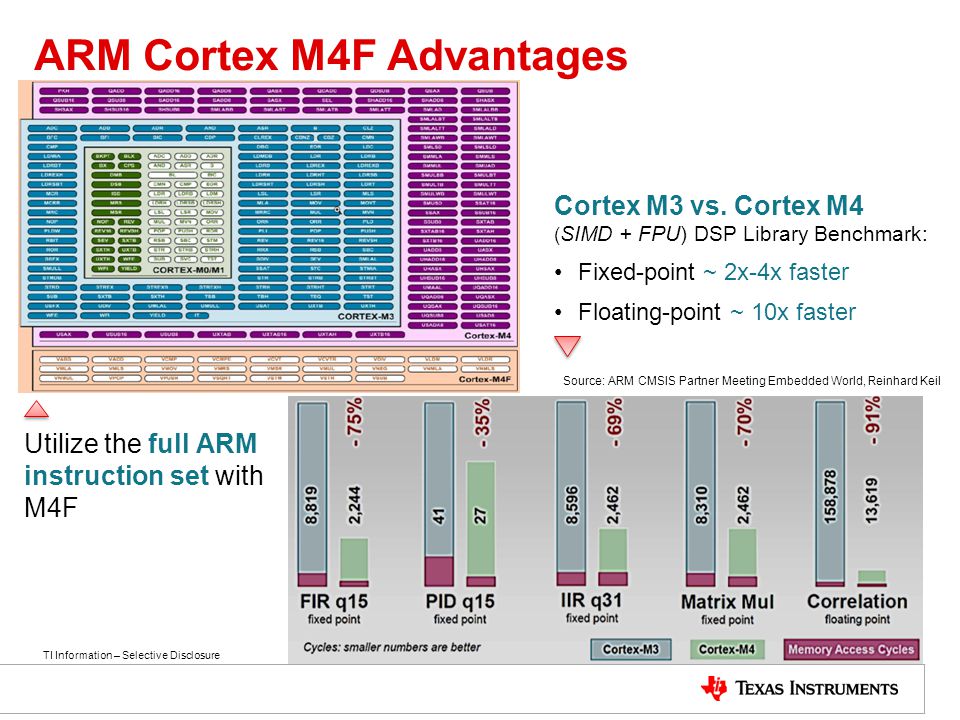



Msp432 Mcus Training Part 1 Msp432 Overview Ppt Video Online Download
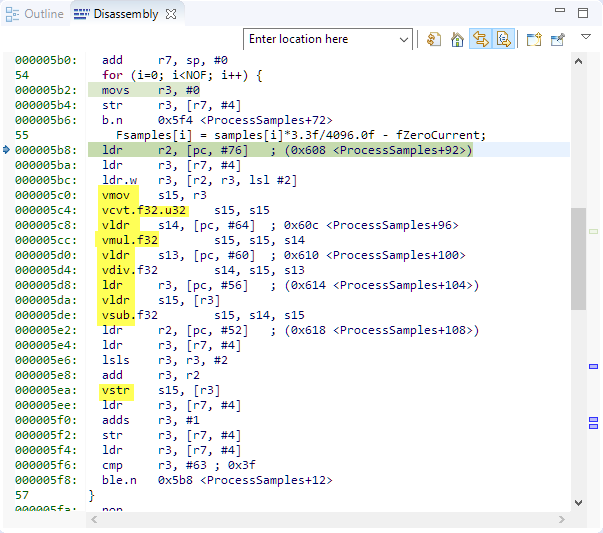



Be Aware Floating Point Operations On Arm Cortex M4f Mcu On Eclipse
· Performance benchmark compared to Cortex M4 series Hello all ESP66 and ESP32 are very nice chipsets with wide open source support and tools I was just comparing ESP32 which is having Xtensa dualcore (or singlecore) 32bit LX6 microprocessor, operating at 160 or 240 MHz We are thinking to migrate our product to ESP32 · CortexM4 software implementation and debug ;这篇文章我们来把 CortexM4和CortexM3做一下对比。 与CortexM3相比,M4提供了更丰富的指令集,还有一个可选的MPU单元。 在指令集方面,M4比M3多了浮点运算指令、单周期的MAC指令、SIMD指令和更多的饱和指令。




Cortex M4f Lazy Fpu Stacking Stack Overflow




The Cortex M7 Cpu Cortex M7 Launches Embedded Iot And Wearables
A demo of the current state of a synthesizer I made using an ARM CortexM4F processor (Tiva Launchpad development board)Blog Post http//tmdarwencom/latesCortex M4 also provides instruction sets of ARM 32 bit type, Thumb 16 bit and Thumb 2 But it also includes range of saturating and SIMD instructions specifically optimized to handle DSP algorithms Cortex M3 does not have a floating point unit Cortex M4 provides an optional floating point unit and in such cases the cores are denoted as M4FCorstone101 also contains the CortexM System Design Kit which provides the fundamental system elements to design an SoC around Arm processors Corstone102 The Arm Corstone102 provides a flexible reference design and system IP for small, lowcost, and energyefficient SoCs
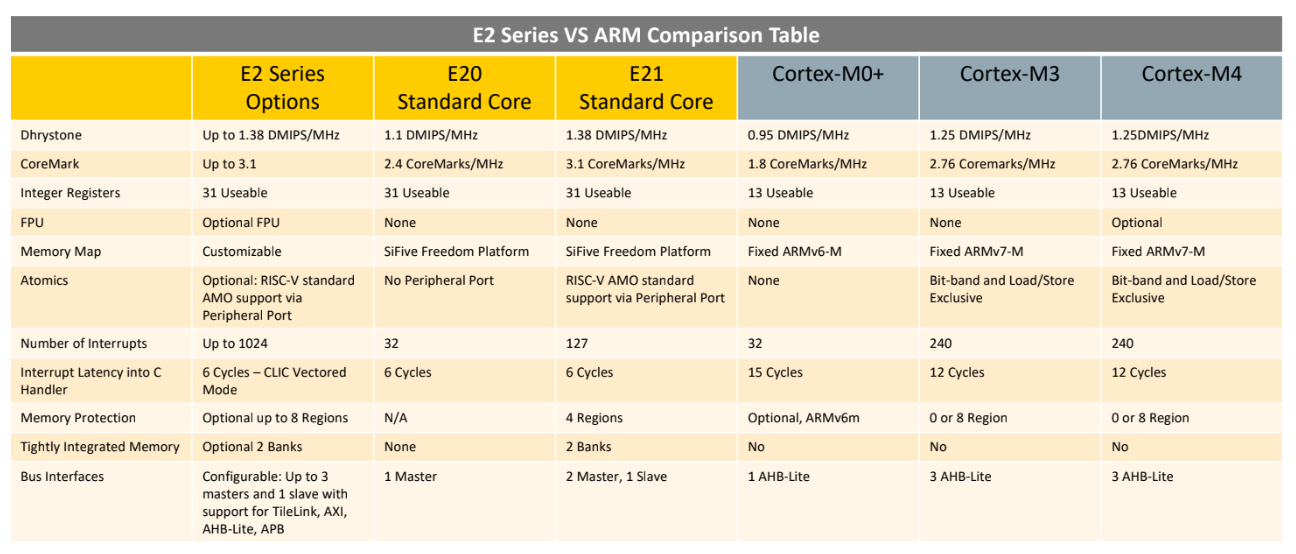



Sifive Releases Smaller Lower Power Risc V Cores Hackaday
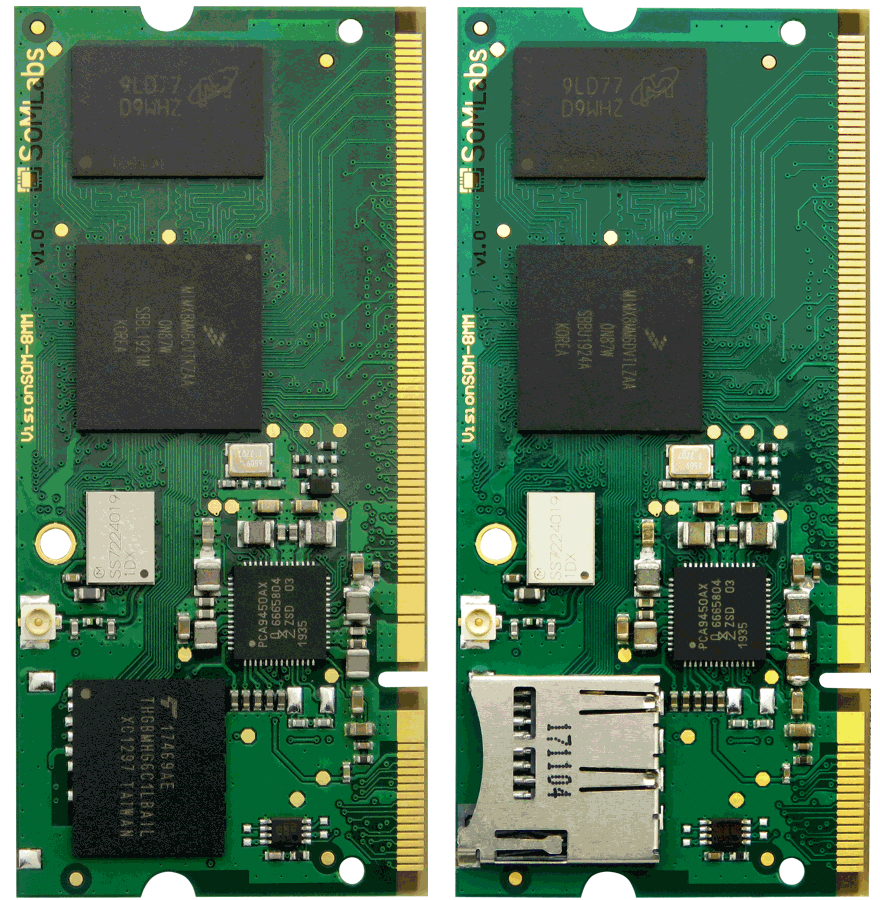



Visionsom 8mmini Module Based On Nxp Quad Core I Mx8mmini Mcu
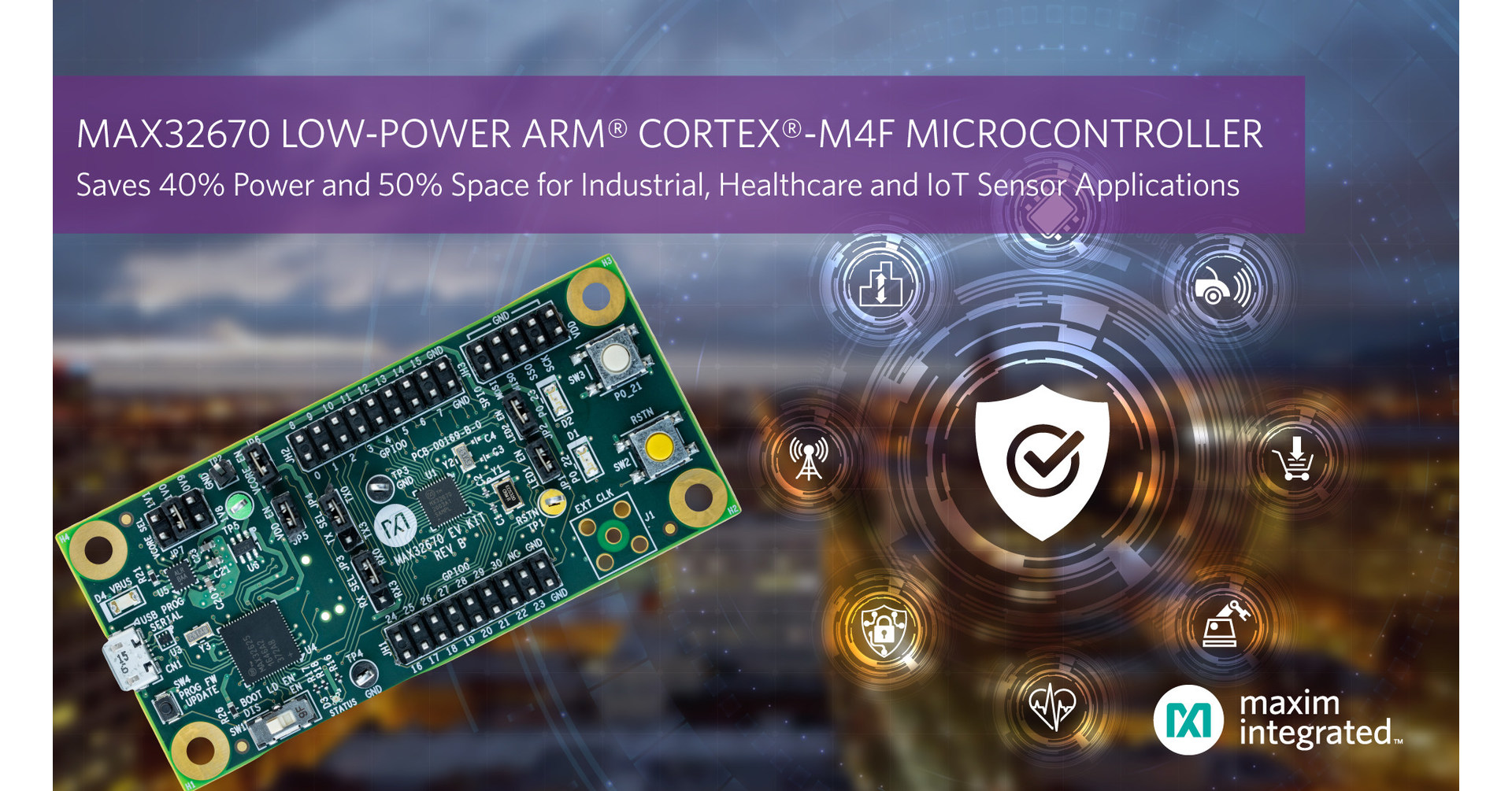



Ultra Reliable Arm Cortex M4f Microcontroller From Maxim Integrated Offers Industry S Lowest Power Consumption And Smallest Size For Industrial Healthcare And Iot Sensor Applications




Texas Instruments Introduces New Tiva Arm Cortex M4 Microcontrollers




Sparkfun Thing Plus Samd51 Dev Sparkfun Electronics




Amazon Com Waveshare Stm32f4discovery Stm32 Discovery Kit For Stm32 F4 Series7 32 Bit Arm Cortex M4f Core 1 Mb Flash 192 Kb Ram Stm32f4 Discovery Board Computers Accessories




Arm Introduces Cortex M4 Core For Digital Signal Controllers Berkeley Design Technology Inc




Arm Cortex M Wikipedia




Handling An Ultra Low Power Cortex M4 Electronic Design
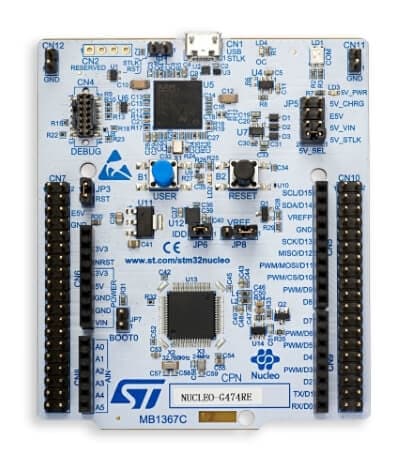



Arm Cortex M4 Microcontrollers Stmicroelectronics




Max Ultra Low Power Arm Cortex M4 With Fpu Based Microcontroller Mcu With 512kb Flash And 160kb Sram Maxim Integrated



Arm Cortex M Wikipedia
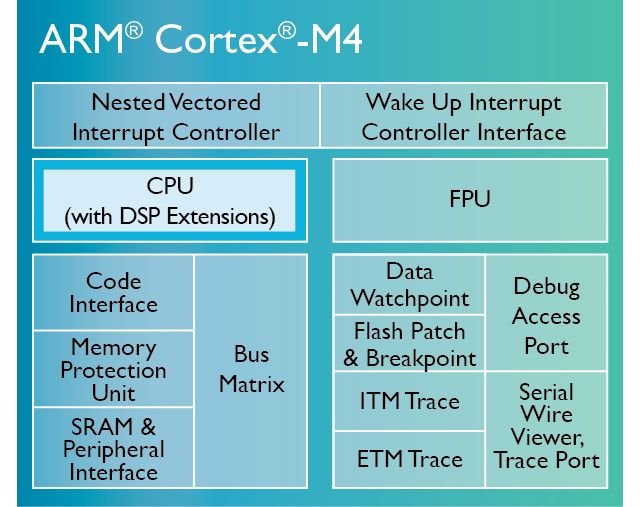



Arm Cortex M4 Architecture Microcontrollers Programming
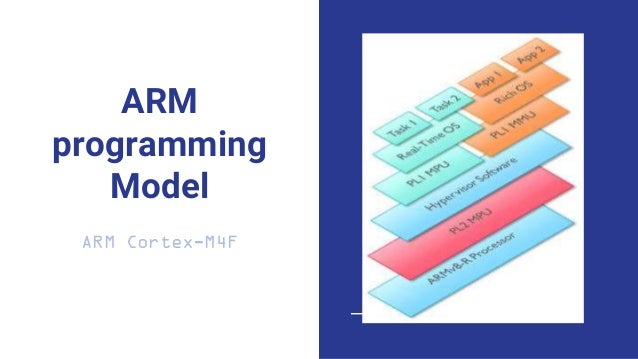



Arm Cortex M4 Programmer Model




Arm Cortex M4 Architecture Microcontrollers Programming
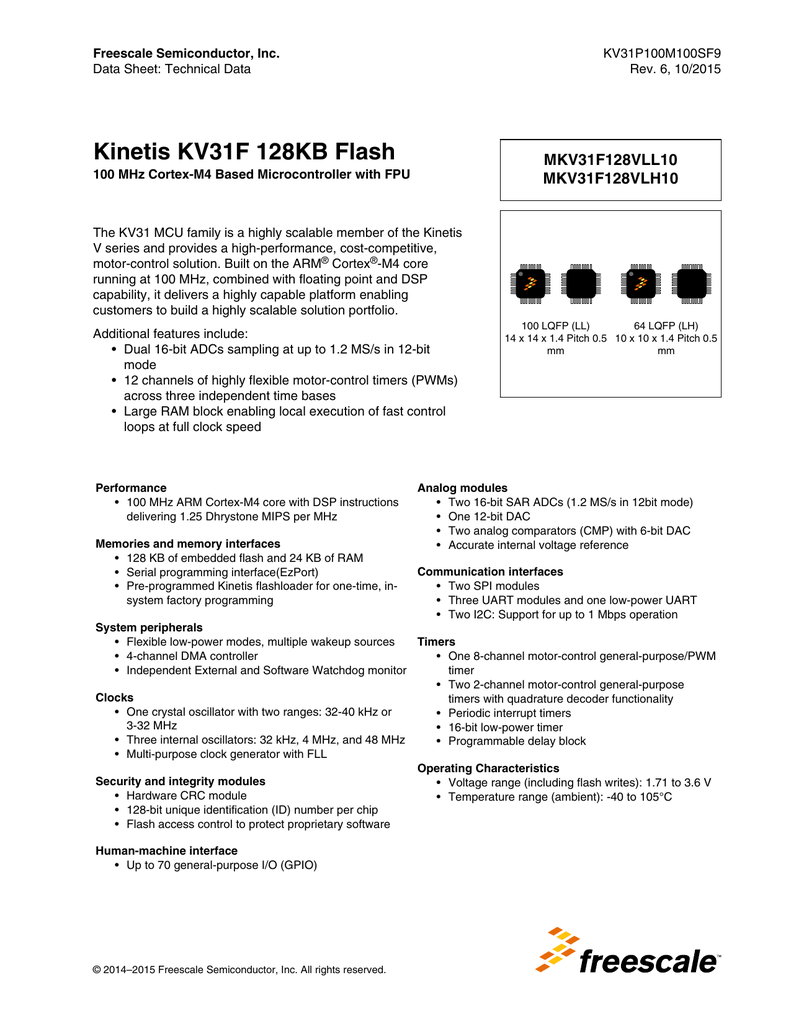



Kinetis Kv31 100mhz Cortex M4f 128kb Flash 64 100pin Manualzz
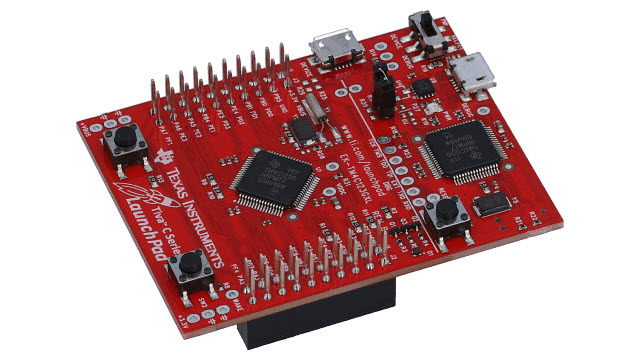



Ek Tm4c123gxl Evaluation Board Ti Com




Cortex M4 Arm Developer
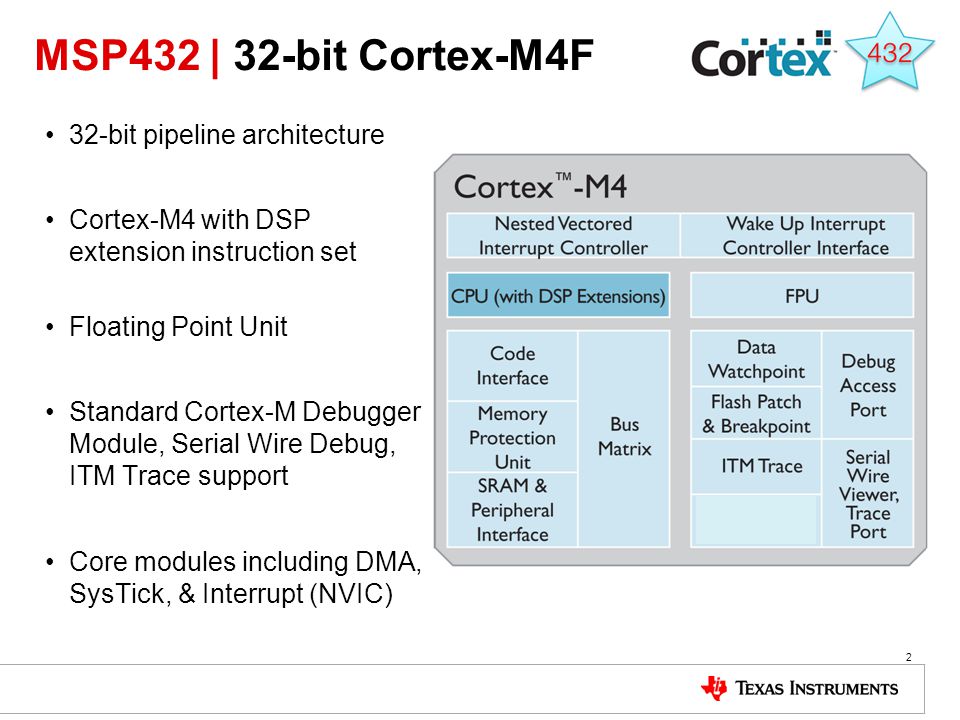



Msp432 Mcus Training Part 2 Cortex M4f Core Ppt Video Online Download




Cortex M4 Fpu And Dsp Instruction Usage In The Stm32f4 Family Youtube
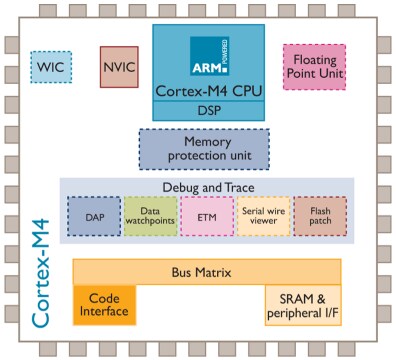



Arm Cortex M4 Microcontrollers Mouser



Teensy 3 0 32 Bit Arm Cortex M4 Online Notes



Cortexfamily




Designing With Arm Cortex M4 And A Real Dev Board Ppt Download




Max Low Power Arm Cortex M4 With Fpu Based Microcontroller With Bluetooth 5 For Wearables Maxim Integrated




Battery Lifetime And Execution Time Over A Range Of Frequencies On The Download Scientific Diagram
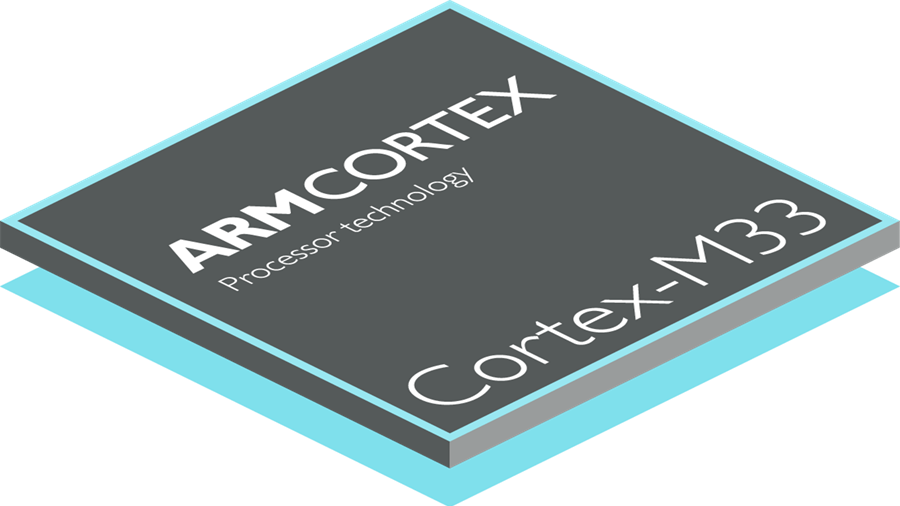



Whitepaper Dsp Capabilities Of Cortex M4 And Cortex M7 Processors Blog Processors Arm Community
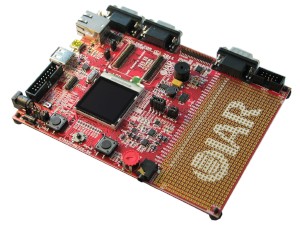



A Free Freertos Based Source Code Project For Arm Cortex M4f Based Stm32f4xx Microcontroller From St
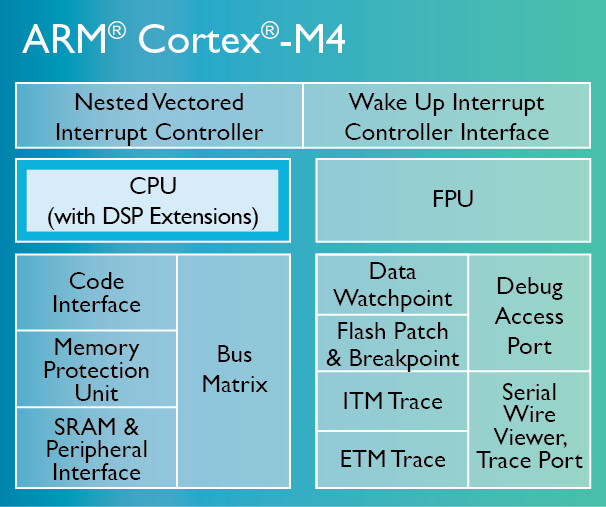



Spansion Sampling 96 New Arm Based Mcus
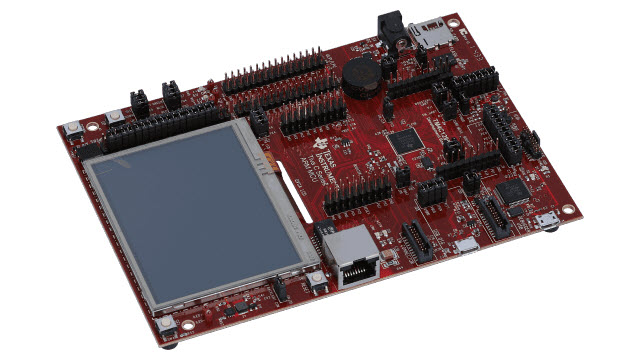



Dk Tm4c129x Development Kit Ti Com
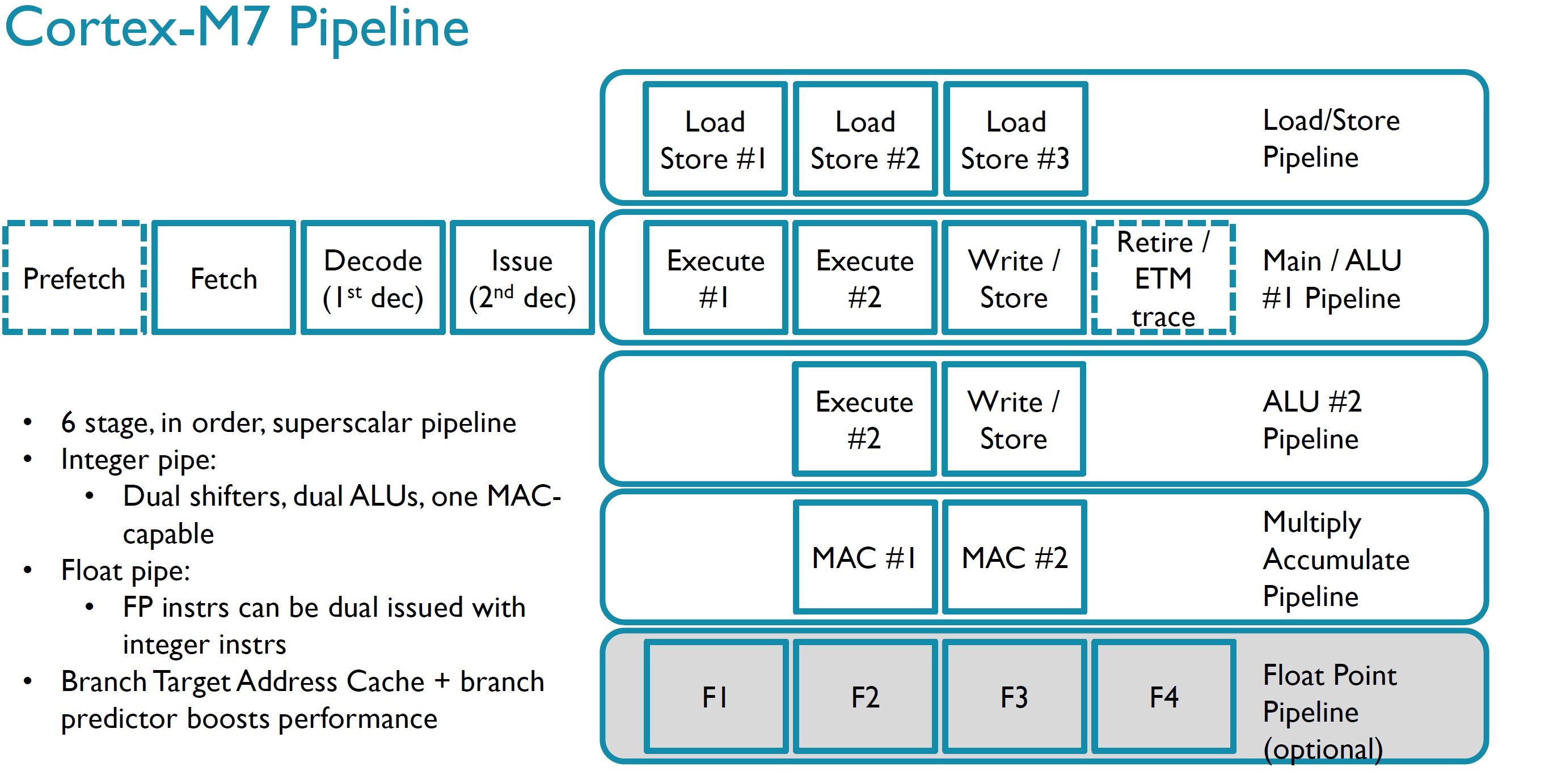



The Cortex M7 Cpu Cortex M7 Launches Embedded Iot And Wearables
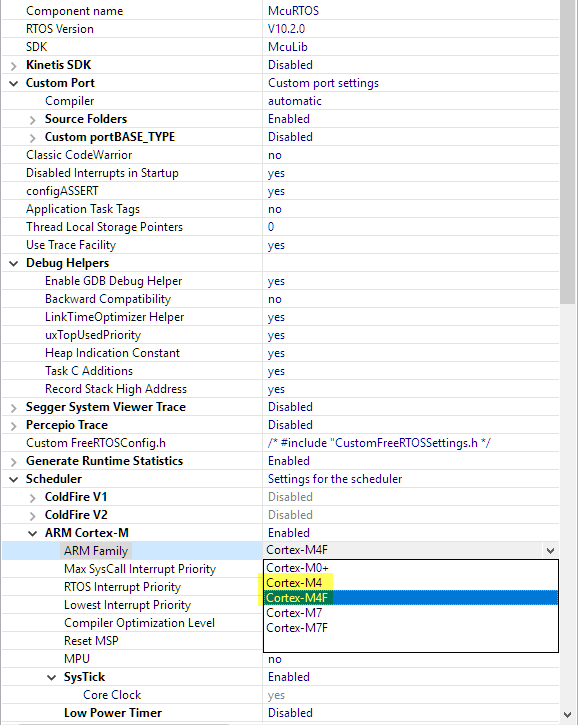



Be Aware Floating Point Operations On Arm Cortex M4f Mcu On Eclipse



Fast Track Exercises To Understand Arm Cortex M4 Architecture Using Texas Instruments Stellaris Launch Pad Science Publishing Group
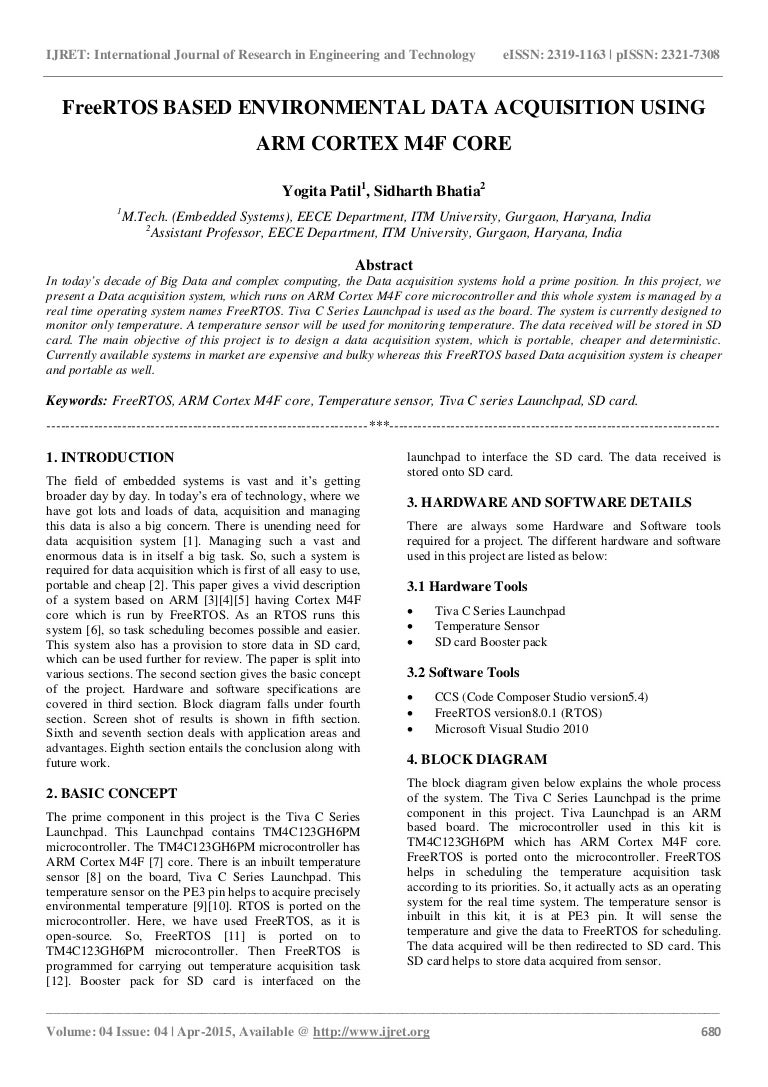



Freertos Based Environmental Data Acquisition Using Arm Cortex M4 F C



Lpc Lpcxpresso Board Tutorial David Rojas




Stm32f407vet6 Stmicroelectronics Stmicroelectronics 32bit Arm Cortex M4f Microcontroller Stm32f 168mhz 512 Kb Flash 100 Pin Lqfp 746 23 Rs Components




Arm Cortex M State Space




Arm Cortex M4 Core Registers
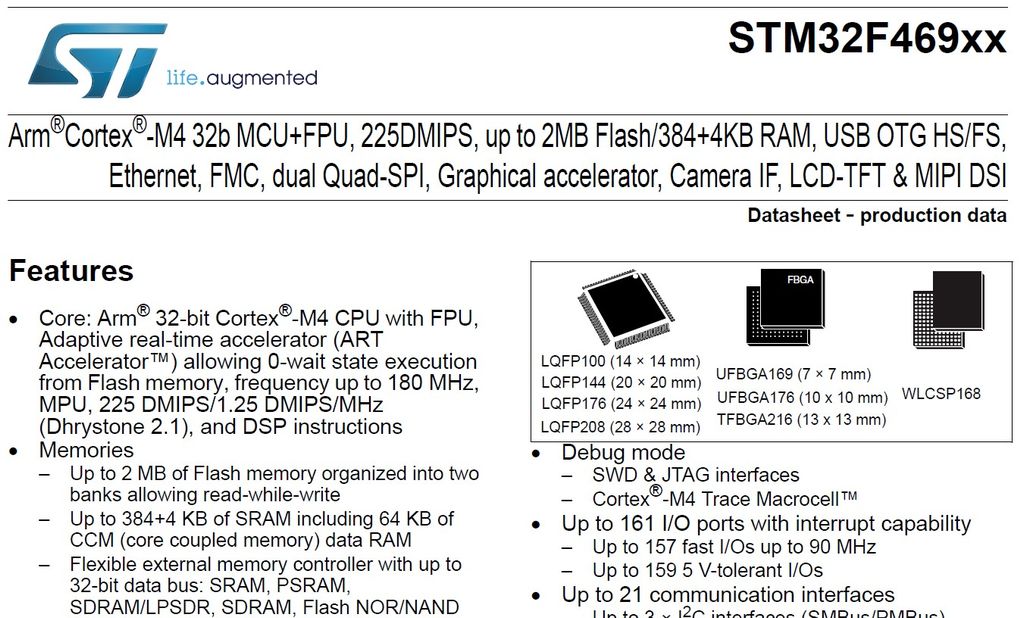



Datasheet Review High Performance Stm32 Cortex M4 Microcontroller




Cortex M4 F Lazy Stacking And Context Switching Arm
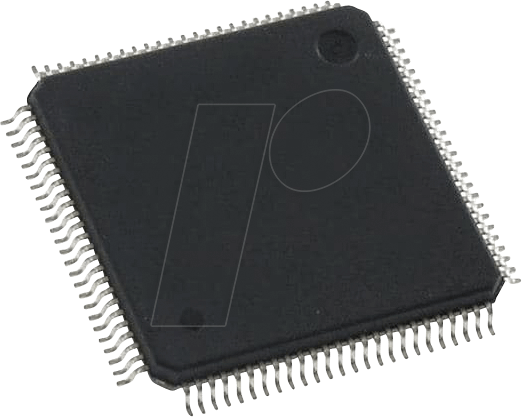



Stm32g474vet6 Arm Cortex M4f Microcontroller 32 Bit 2 3 6v 512kb Lqfp 100 At Reichelt Elektronik




Sparkfun Micromod Samd51 Processor Pimoroni




Rtos For Arm Cortex M




Freertos Port And Pre Configured Application For The Infineon Xmc4000 Xmc4500 Arm Cortex M4f Microcontroller Using Keil And Iar Tools




Designing With Arm Cortex M4 And A Real Dev Board Ppt Download



File Energy Micro Woder Gecko Stk Showing Efm32wg990f256 Arm Cortex M4f Mcu Jpg Wikipedia



Ambiq Micro Apollo Low Power Mcus Promise Cortex M4f Performance At Cortex M0 Energy Efficiency Cnx Software
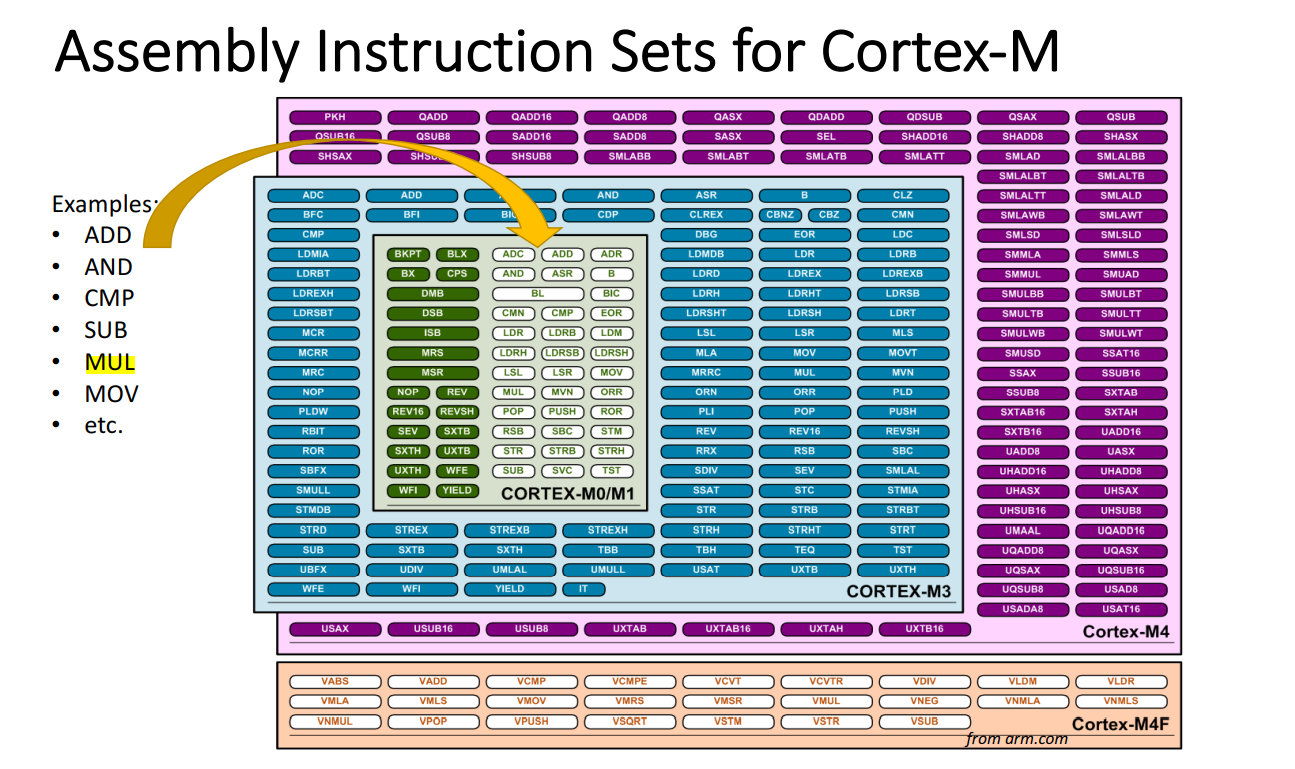



4 How Many Registers Do A Cortex M4 Architecture Chegg Com




Arm Cortex M Interrupts And Freertos Part 1 Mcu On Eclipse
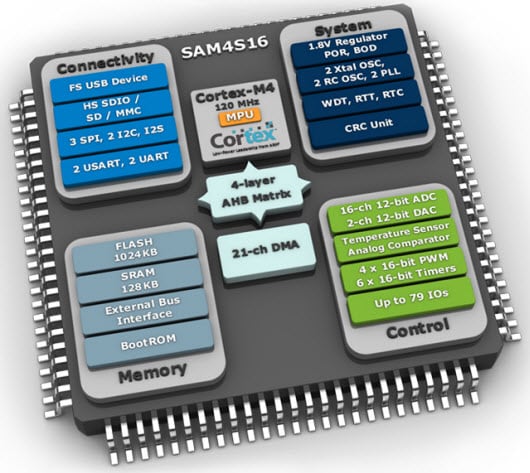



Arm Cortex M4 Microcontrollers Mouser




Is Cortex M4 The Strongest Processors Blog Processors Arm Community




Arm S Cortex M Even Smaller And Lower Power Cpu Cores




What Is The Top Level Difference In Features Between Cortex M33 And Cortex M4 Trustzone For Armv8 M Forum Trustzone For Armv8 M Arm Community




Arm Cortex M Wikipedia




Arm Cortex M4 Architecture Microcontrollers Programming




Arm Cortex M4 F System Design
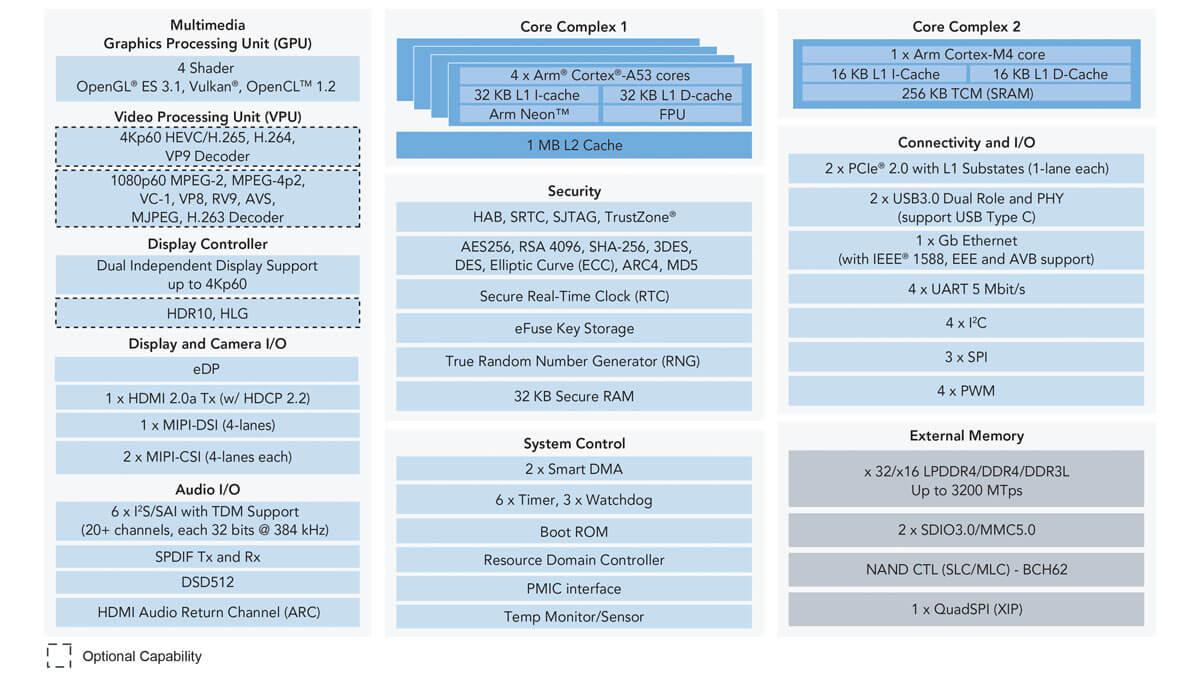



I Mx 8m Applications Processor Arm Cortex A53 Cortex M4 4k Display Resolution Nxp Semiconductors




Evaluating Arm Cortex M4f Microcontrollers Youtube
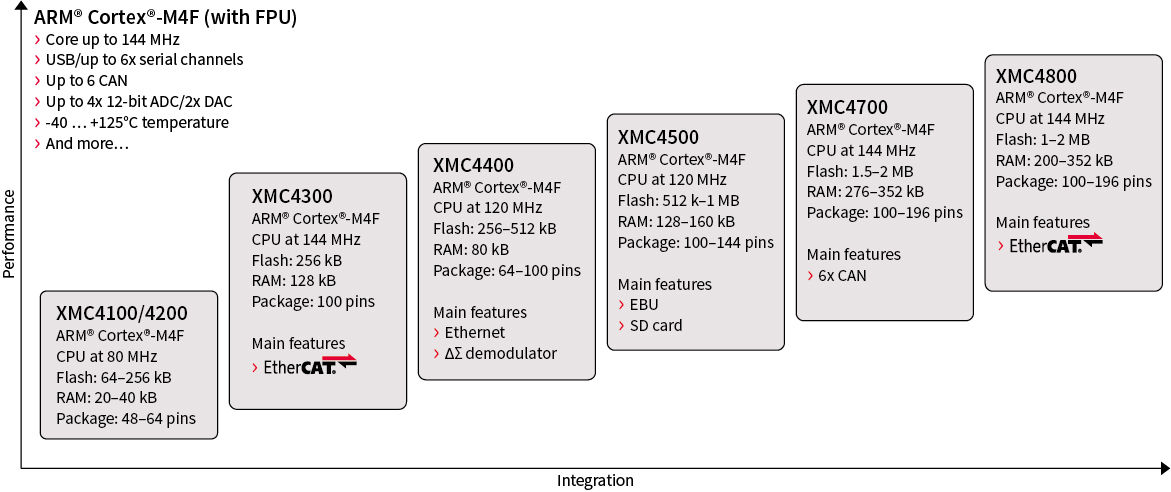



32 Bit Xmc4000 Industrial Microcontroller Arm Cortex M4 Infineon Technologies




Sam D5 E5 32 Bit Arm Cortex M4f Mcus Microchip Technology Mouser
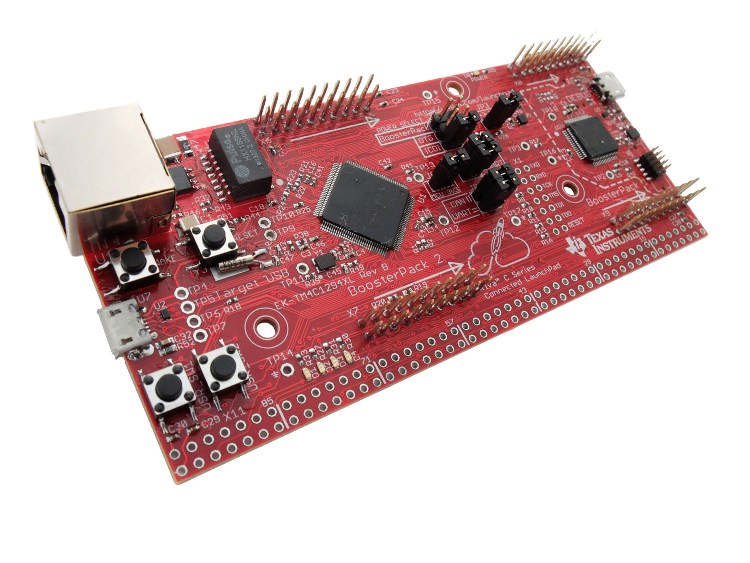



Ek Tm4c1294xl Evaluation Board Ti Com




Cortex M4 Mcu Incorporates Hardware Crypto With Low Power Arm




Arm Cortex M4 Combines Dsp And Microcontroller Features Ppt Download




The Definitive Guide To Arm Cortex M3 And Cortex M4 Processors Yiu Joseph Amazon Com Books




Cortex M4f Targets Connected Embedded Applications Electronic Design




Arm Cortex M Rtos Context Switching Interrupt
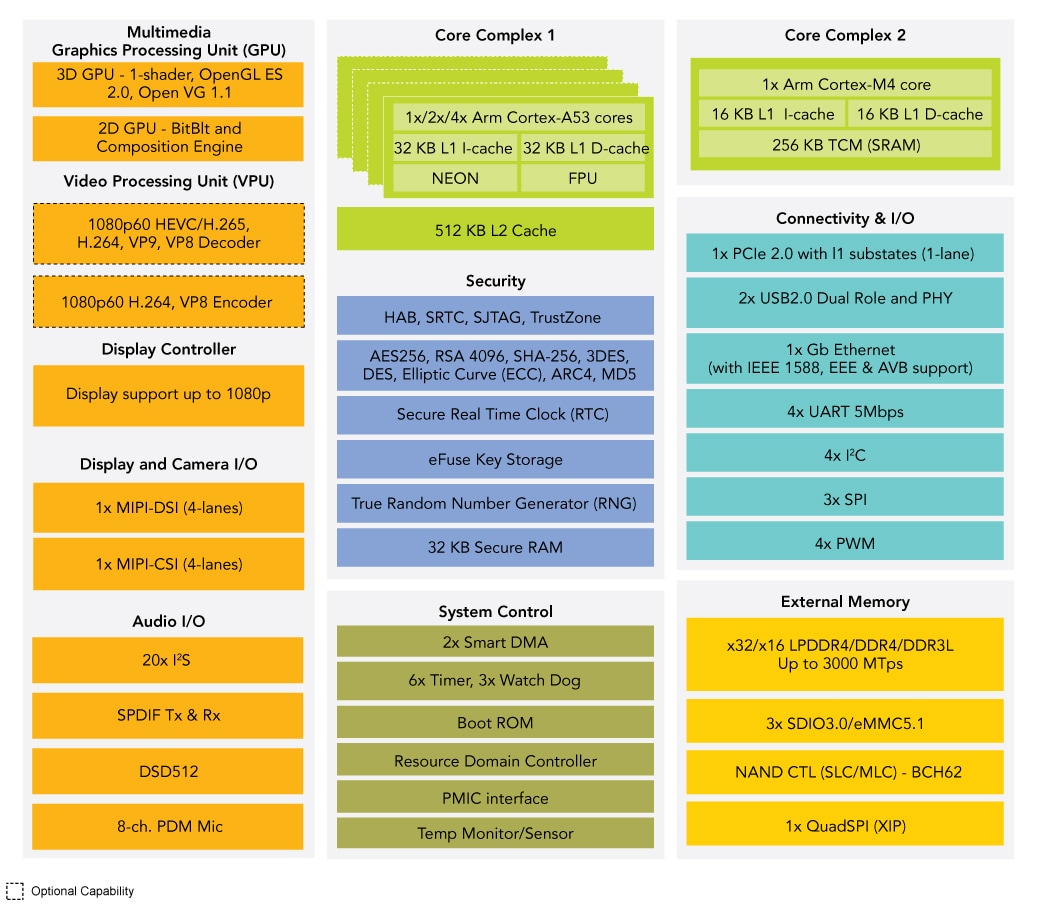



I Mx 8m Mini Arm Cortex A53 Cortex M4 Nxp Semiconductors
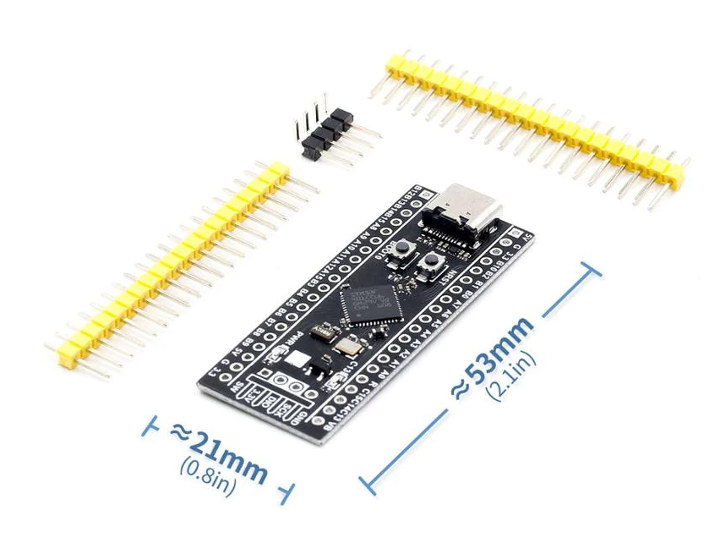



3 Stm32 Black Pill Board Features Stm32f4 Cortex M4 Mcu Optional Spi Flash Cnx Software




Cortex M4 Eda360 Insider
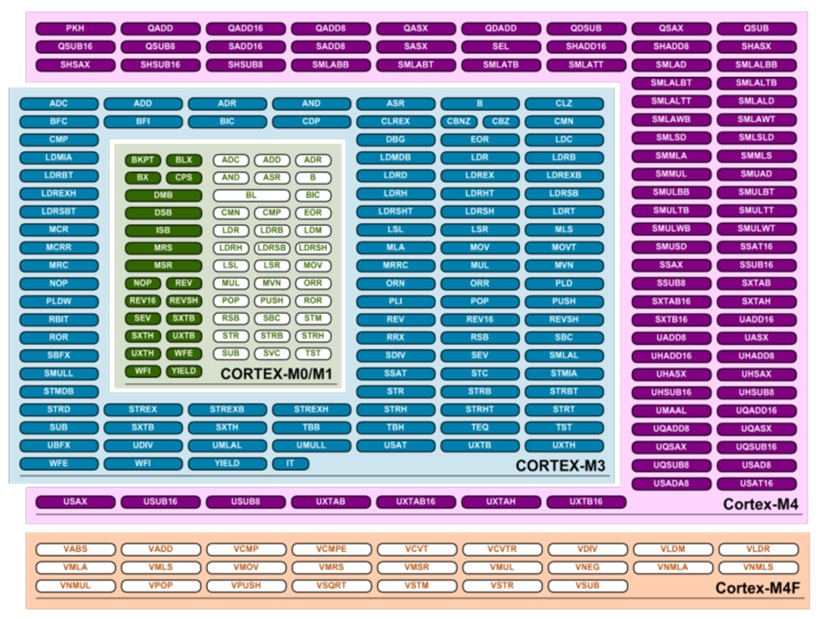



Catching The String Thoughts On Arm Cortex M Differences
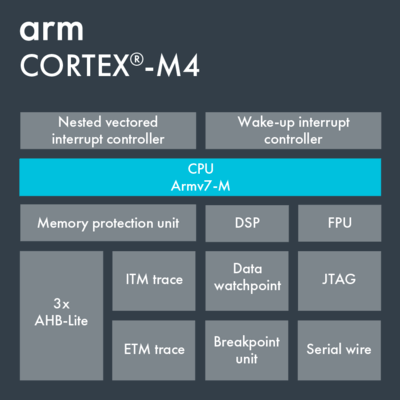



Arm Cortex M4 Microcontrollers Stmicroelectronics
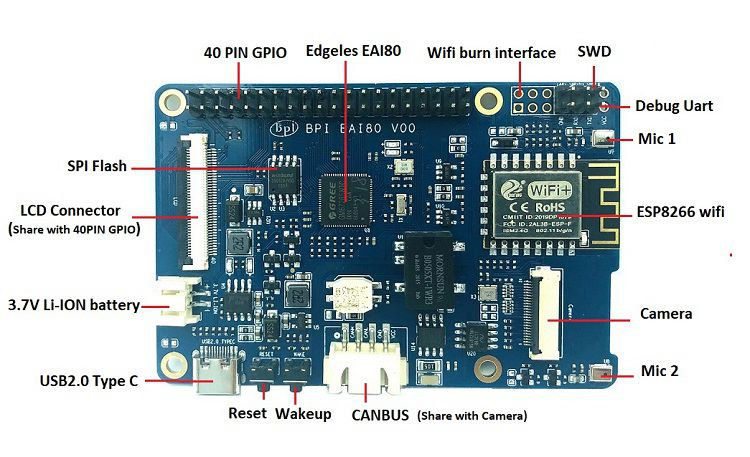



16 Banana Pi Bpi Eai80 Cortex M4f Board Embeds Ai Accelerator Wifi Module Cnx Software
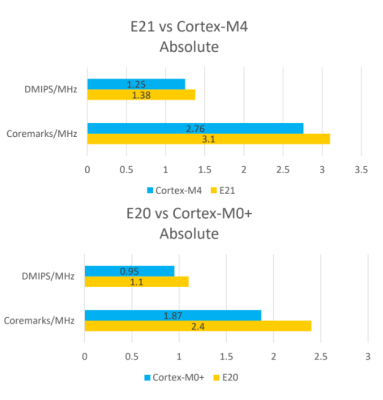



Sifive Releases Smaller Lower Power Risc V Cores Hackaday




Arm Cortex M4 Programmer Model
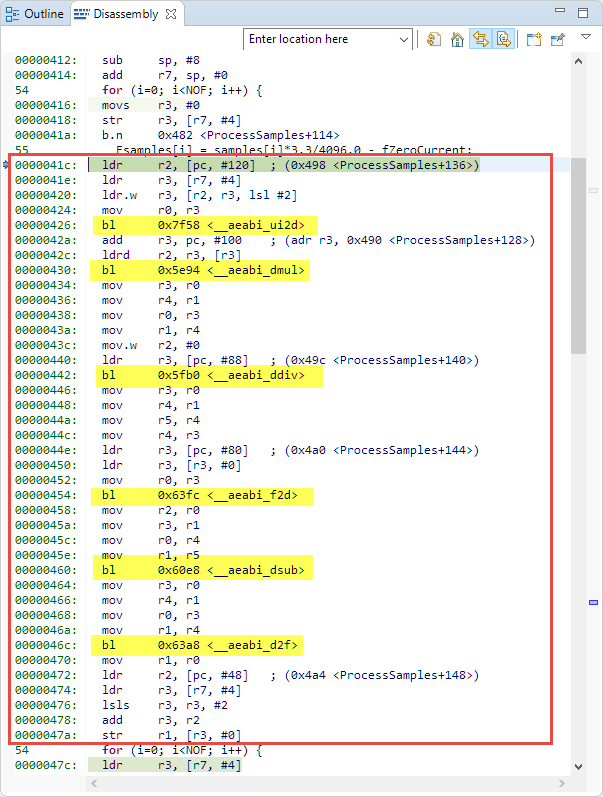



Be Aware Floating Point Operations On Arm Cortex M4f Mcu On Eclipse


